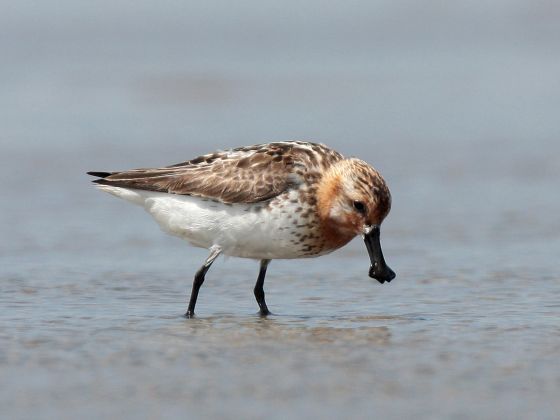9 January 2017
Today Online
For the first time, Singapore is hosting two events aimed at protecting migratory birds that use a major pathway called the East Asian-Australasian Flyway (EAAF).
On the agenda: The protection of a critically endangered shorebird called the Spoon-billed Sandpiper, of which an estimated 150 breeding pairs are left in the world.
The EAAF is one of nine globally recognised flyways and spans 22 countries, extending from the Arctic Circle through East and Southeast Asia to Australia and New Zealand.
It supports over 50 million migratory birds from over 250 populations and has the highest number of threatened migratory species.
The first event, the Arctic Migratory Bird Initiative EAAF Workshop, began yesterday and ends tomorrow. It brings together 80 government representatives, experts, researchers and conservationists from 20 countries.
Minister of State in the Prime Minister’s Office and Ministry of Manpower, Mr Sam Tan, opened the workshop at Sungei Buloh Nature Reserve [EAAF073], a key stopover for Arctic migratory birds.
The Arctic Migratory Birds Initiative is a project under the Arctic Council’s Conservation of Arctic Flora and Fauna working group. Singapore has been a permanent observer on the Arctic Council since 2013.
Participants will discuss priorities for intertidal habitat preservation in Southeast Asia, Yellow Sea conservation, demonstration projects and illegal bird hunting.
Yesterday, experts highlighted the urgency of saving the Spoon-billed Sandpiper, whose populations have been hit by habitat loss, hunting and climate change.
An estimated 400 to 500 individuals are left in the wild, and it is the rarest migratory species, said Dr Christoph Zockler, coordinator of the EAAF Partnership Spoon-billed Sandpiper Taskforce.
The bird breeds in Russia and passes through Korea, Japan and other Yellow Sea intertidal areas, spending northern winters in Thailand, Myanmar, Bangladesh, eastern China and Vietnam.
It is rarely sighted further south and was last seen in Singapore in the 1990s.
Dr Zockler and other researchers recently used satellite tags on three Spoon-billed Sandpipers to uncover previously unknown sites used by the bird: Hangzhou Bay and sites in southern Fujian province. Work is also underway to tackle illegal mist-netting in Fujian.
From Wednesday to Sunday, the biennial EAAF Partnership Meeting of Partners will be held, bringing together participants from countries including China, Russia and the United States.
The partnership is an informal, voluntary initiative for international cooperation to protect the flyway’s migratory birds and their habitats; its partners include governments and non-government organisations.
Efforts in one country will be much less effective if migratory bird populations are suffering in another, said EAAF Partnership chief executive Spike Millington. “You have to take care of these birds all along the flyway,” he said.
National Parks Board (NParks) group director (conservation) Wong Tuan Wah said Singapore was happy to share best practices and learn from others.
NParks will conduct training workshops on wetland management in the second half of this year and open them to wetland habitat managers from the EAAF.
The original article : http://www.todayonline.com/singapore/singapore-hosts-two-migratory-bird-events-first-time.





